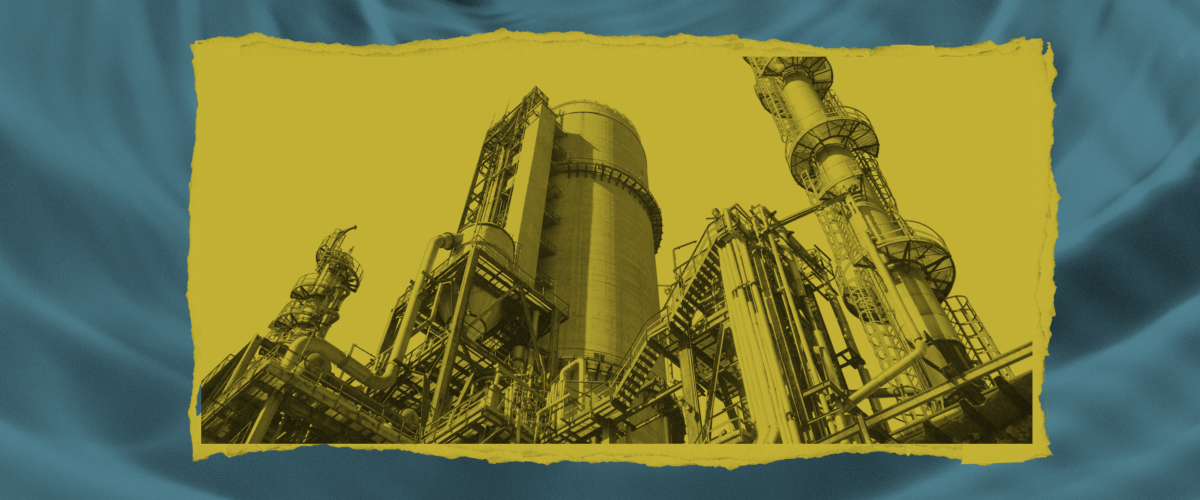Exposing a New Threat to Our Water: Hydrogen Power
Published Feb 7, 2023

The U.S. has several new hydrogen power projects in the works — but our new research shows how these H2 plans will seriously drain our H2O supply.
Our water supply faces threats on multiple fronts, from greedy corporate giants, to climate change-fuelled natural disasters. But a new threat looms on the horizon, boosted by billions in federal dollars: hydrogen power.
The hype around hydrogen is gaining steam. Proponents tout it as the clean energy of the future. But hydrogen entrenches fossil fuel use and infrastructure, as well as the resulting pollution in frontline communities. Just as outrageous — it devours everything from electricity, to tax dollars, and even water, that essential ingredient to all life.
Food & Water Watch’s new research finds just how thirsty hydrogen is. Moreover, it shows that we can’t afford to waste so much water on a hydrogen buildout, especially given our current water crises.
Hydrogen’s Water Needs are Dangerously Unsustainable
Hydrogen is everywhere, but the molecule isn’t often found on its own in nature. To use it for transporting, storing, and delivering energy, you need to isolate hydrogen using other energy sources.
That requires a feedstock (often fossil fuels like coal, oil, and gas), a chemical reaction powered by energy, and lots of water. The process also uses more water for cooling, water treatment, and disposal. Powering and sourcing hydrogen production with fossil fuels raises water requirements even higher. That’s because extracting and processing fossil fuels have their own huge water demands.
Given all this, we knew that hydrogen production was thirsty. But we weren’t sure exactly how thirsty — so we did the math.
First, we looked at U.S. goals for growing the hydrogen industry. The Department of Energy aims to boost U.S. hydrogen production from 10 million metric tons in 2020 to 50 million metric tons a year by 2050.
Then, we looked at a projection of hydrogen production’s energy mix by 2050. One organization projects that, worldwide, two-thirds of hydrogen will come from renewables, and one-third from natural gas in 2050.
We found that if we met U.S. goals with that energy mix, our water supplies would be in big trouble. Hydrogen production would gulp down so much water, it would equal the annual water use of 34 million Americans.
And these numbers don’t even include the water needed for gas production. Fracking is an incredibly thirsty process. In fact, we found that the upstream water demands of hydrogen sourced from fracking are 6 times greater than hydrogen sourced from solar power. They’re also 120 times greater than hydrogen sourced from wind.
Seawater Won’t Quench Hydrogen’s Thirst
Companies have proposed hydrogen projects in areas with already-dwindling freshwater supplies. That’s a huge problem for these projects, because hydrogen is so thirsty. So they’ve turned to the ocean for its seemingly endless supply — but that’s no solution.
To use seawater, companies will have to remove the salt through desalination, a process that demands a lot of water and power. For example, renewables-based hydrogen will require about five times more seawater than freshwater.
What’s more, desalination dumps a lot of waste back into the ocean. That includes hot discharge, which can kill sea life, lethal chemicals, and suffocating concentrations of salt. Methods that aim to prevent these threats to vital ecosystems have a mixed record on actually working.
Learn more about how hydrogen buildouts will threaten our water supply in our newest report, “Hydrogen’s Water Problem.”
Drought-Stricken Areas Can’t Handle Hydrogen
One federal program promises to fuel hydrogen development with an $8 billion hydrogen hub program. That program will fund at least six hubs for hydrogen production, transport, export, and use across the country.
That includes regions currently suffering from a historic megadrought.
For example, in Los Angeles, a hydrogen hub proposal backed by the region’s utility is moving through City Council. The LA hub would include a retrofit of four fracked gas power plants to burn hydrogen instead.
Our research found that these plants would guzzle 1.7 billion gallons of freshwater annually by 2045. That’s equivalent to the indoor water use of more than 111,000 Californians.
News of the LA hub arrives in the midst of strict water conservation measures to address the drought. It doesn’t make sense to push huge amounts of its dwindling water supply toward these wasteful projects — especially when we have other options.
Producing the same amount of energy as the retrofitted plants through solar power would require only 8.5 million gallons of water a year. And wind energy would require even less water — 214,348 gallons a year, or the equivalent of just 14 Californians’ annual indoor water use.
This is far from the only hydrogen hub threatening the American West. For example, California is home to other potential hydrogen hubs. Companies are also pursuing hydrogen projects in New Mexico, where farmers are selling their livestock because there isn’t enough water for the animals.
Food and fossil fuel corporations are already recklessly using water, worsening the drought crisis. The West doesn’t need another water-hungry giant threatening the water supply.
Renewables Are the Real Solution to Our Climate Crisis
Many of the hydrogen proposals sweeping the nation are nothing more than greenwashing boondoggles, sold by the same companies that created our climate crisis in the first place. Hydrogen will help them double down on their polluting, climate-wrecking business models, ensuring their dirty fossil fuel infrastructure stays around for decades to come.
We cannot waste our time, resources, and energy on hydrogen when we already have solutions that we know will work, like electrification with solar and wind. As it stands, hydrogen will slow down our clean energy transition and entrench fossil fuels. And, it’ll suck up billions upon billions of gallons of our precious water supply along the way.
We can do this hard-hitting research because of the generosity of supporters like you.
Enjoyed this article?
Sign up for updates.
TO TOP


